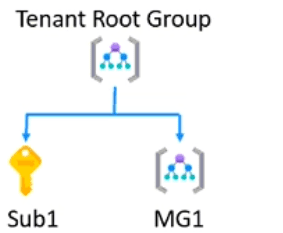Microsoft Azure Security Technologies AZ-500 Exam Practice Test
You have an Azure subscription that contains the virtual networks shown in the following table.

The subscription contains the virtual machines shown in the following table.

On NIC1, you configure an application security group named ASG1.
On which other network interfaces can you configure ASG1?
Answer : C
Only network interfaces in NVET1, which consists of Subnet11 and Subnet12, can be configured in ASG1, as all network interfaces assigned to an application security group have to exist in the same virtual network that the first network interface assigned to the application security group is in.
https://azure.microsoft.com/es-es/blog/applicationsecuritygroups/
You have an Azure subscription named Subscription1.
You need to view which security settings are assigned to Subscription1 by default.
Which Azure policy or initiative definition should you review?
Answer : B
https://docs.microsoft.com/en-us/azure/security-center/tutorial-security-policy
https://docs.microsoft.com/en-us/azure/security-center/policy-reference
You have an Azure subscription that uses Microsoft Defender.
You enable the CIS Microsoft Azure Foundations Benchmark v2.0.0 built-in to the subscription.
You need to ensure that when users attempt to assign custom role-based access control (RBAC) roles, they receive a custom error message that includes a link to an internal website. The solution must minimize the impact on other policies.
What should you configure?
Answer : C
You plan to implement JIT VM access. Which virtual machines will be supported?
Answer : A
Overview
You have a Microsoft Entra tenant that uses Microsoft Entra Permissions Management and contains the accounts shown in the following table:

Which accounts will be listed as assigned to highly privileged roles on the Azure AD insights tab in the Entra Permissions Management portal?
Answer : D
You have an Azure subscription.
You plan to create a workflow automation in Azure Security Center that will automatically remediate a security vulnerability.
What should you create first?
Answer : E
https://docs.microsoft.com/en-us/azure/security-center/workflow-automation
You have an Azure subscription named Sub1 that uses Microsoft Defender for Cloud. You have the management group hierarchy shown in the following exhibit.

You create the definitions shown in the following table.

You need to use Defender for Cloud to add a security policy. Which definitions can you use as a security policy?
Answer : B